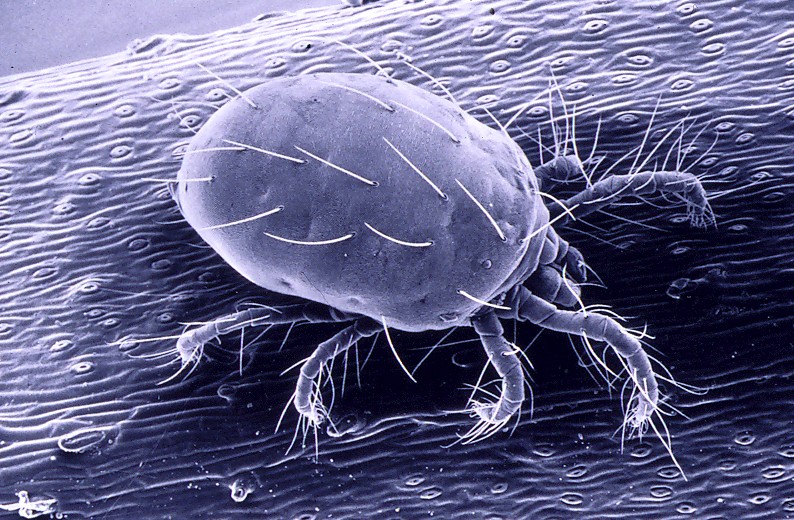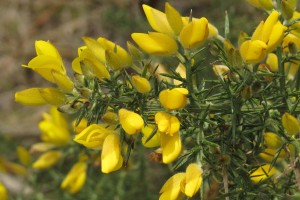Gorse spider mite
History in New Zealand
Gorse spider mites are native to Europe, and they were first imported from England by the DSIR in 1988. Following widespread release over the next few years they established well throughout New Zealand, except in the north of the North Island and the west coast of the South Island. The failure of gorse spider mites there prompted Landcare Research to import an additional five populations in 1993, from areas in Spain and Portugal where the climate more closely matched the warmer, wetter parts of New Zealand. Gorse spider mites are now established in all regions of New Zealand.
How would I find/recognise it and what is its lifecycle?
Gorse spider mites live in communal webs on gorse bushes. They can be found year-round, but are easiest to find following warm dry spells when the colonies are largest. The webbing can be damaged or destroyed by rain. Look for the fine white webs that may be as small as a fist or large enough to cover several gorse bushes. Look inside the webbing for the tiny gorse spider mites.
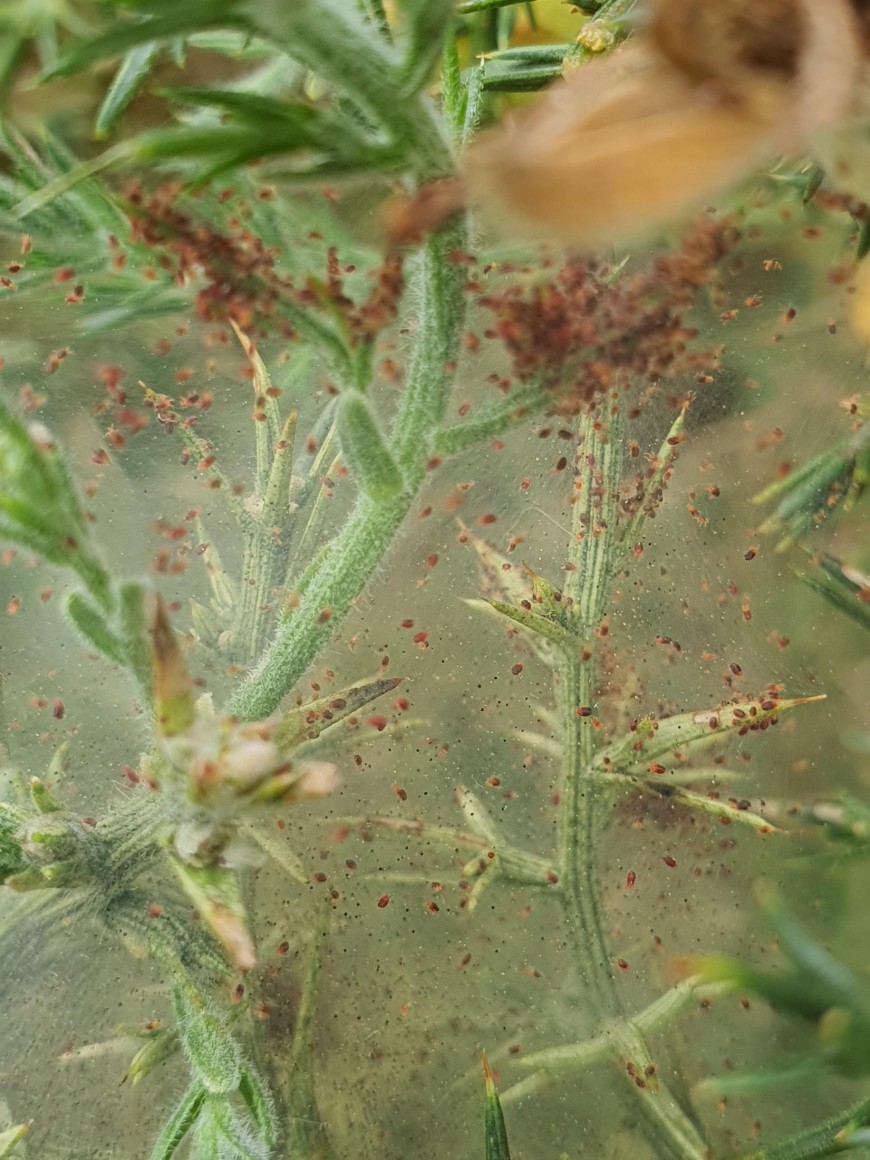
Image: gorse spider mite (Tetranychus lintearius).
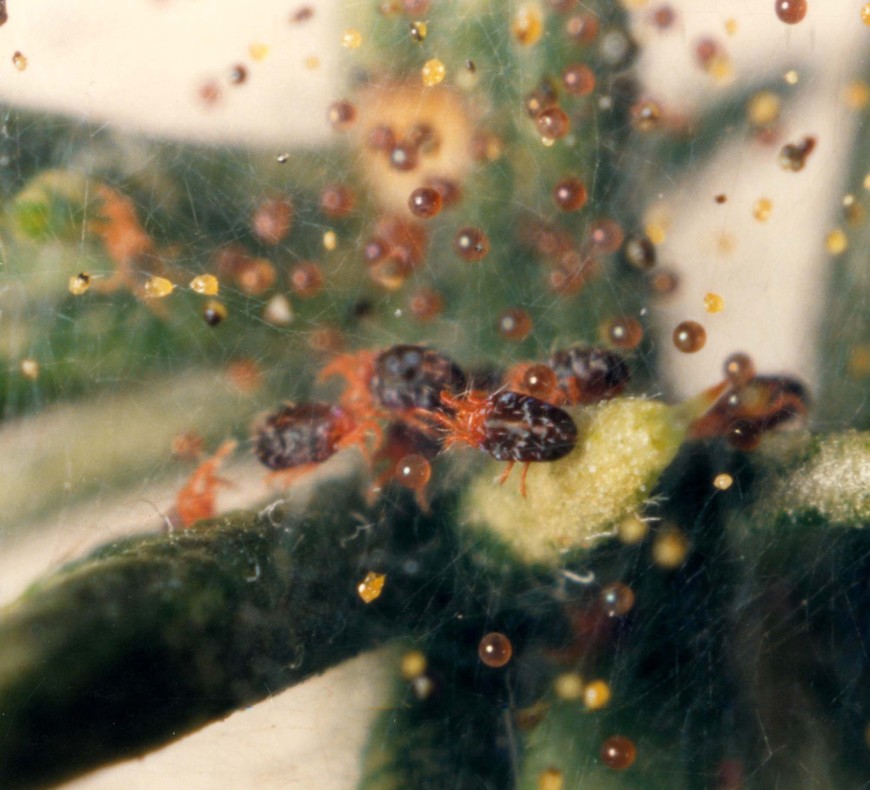
Image: close-up of gorse spider mites inside their webbing.
During warm weather mites move busily throughout the web. In colder weather they are more inclined to cluster at the centre of the web, often on the leeward side of stems, for protection from wind and rain.
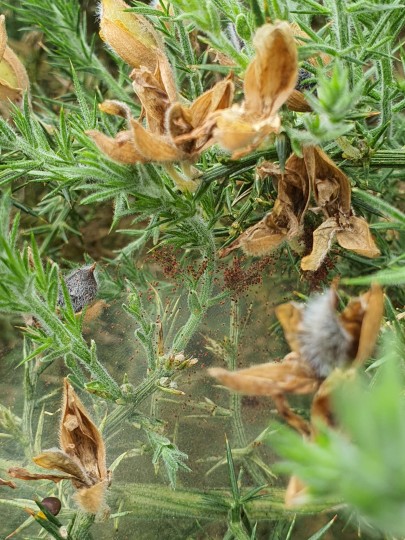
Image: gorse spider mites clustered inside their web.
The adults are brick red in colour. The females are smaller than the size of a pin head, and the males are even tinier and more triangular. You are most likely to see the females as there are about five of them for every male. You will not be able to tell which stock the gorse spider mites came from, as they look identical and are likely to have interbred. New adults feed for a fortnight before they begin to breed. The warmer the temperature the faster gorse spider mites can breed.
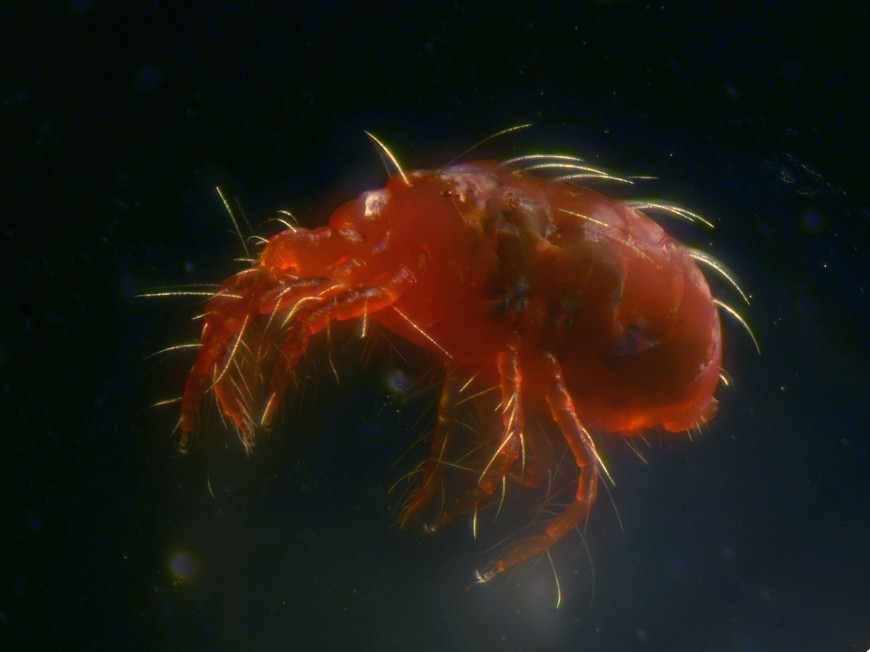
Image: gorse spider mite (Tetranychus lintearius). Photo credit: Tony Wills CC BY 4.0 via Wikimedia Commons.
If you have a magnifying glass look for clusters of tiny round brownish eggs tucked in close to the gorse stems. Do not confuse the eggs with the much smaller black specks of frass (droppings). Each female can lay 30-40 eggs, usually at the rate of one per day. The eggs hatch after about a fortnight and moult through 6 juvenile stages (you may see the cast-off white skins in the webbing). Juveniles are smaller than the adults and more orange in colour.
You may also see two predators that attack gorse spider mites. One is a small (about 2 mm long) endemic black ladybird (Stethorus bifidus) which has the potential to destroy mite colonies. The other is a mite (Phytoseiulus persimilis) that was intentionally introduced to New Zealand to attack pest mite species in orchards, but sometimes feeds on gorse spider mites. These predatory mites are slightly larger and paler than adult gorse spider mites.
Gorse spider mites are easy to differentiate from other gorse biocontrol agents or insects on gorse.
See Gorse colonial hard shoot moth, Gorse pod moth, Gorse seed weevil, Gorse soft shoot moth, Gorse thrips, and Native insects that damage gorse.
How does it damage gorse?
Gorse spider mites have sucking mouthparts that pierce the walls of individual gorse foliage cells and extract the cell contents. Even if the mites are no-longer present you can see where they have been feeding, as the foliage looks bleached (or even brown). Growth is reduced, and flowers may be aborted.
Image: large gorse spider mite infestation.
Will it attack other plants?
No, gorse spider mites will only damage gorse. Do not be fooled by another closely related species of mite that looks almost identical to gorse spider mite. These gorse spider mite lookalikes have recently been recorded in New Zealand on species of Coprosma and may attack other plant species as well. See Insects commonly mistaken for biocontrol agents.
How effective is it?
When present in large numbers, gorse spider mites can cause considerable damage gorse plants. The shoots that the mites have fed on are the worst affected, but the growth of the entire bush may be reduced. One study showed that if gorse spider mites attack a bush for only 1 year then the growth of the bush is stunted during that year, but it is able to recover and grow normally the following year. However, if gorse spider mites remain on a bush in large numbers for several years then the damage is more permanent. In another study, bushes attacked by gorse spider mites for 2 successive years were on average 20% lighter than undamaged bushes. Impacts of repeated mite attacks have not been studied in detail but plants over 10 years old at a Palmerston North site appeared to be dying following repeated mite attack, but this has not often been reported.
If you watch gorse spider mite colonies closely you will notice that the populations tend to grow for 2-3 years and then suddenly decline during mid-summer. Two factors appear to contribute to the population crash - heavy predation of the less mobile juvenile stages by predators mentioned above, and mass migration by the adults.
Migration may be trigged by predator numbers, colony size, a plant response, or some other factor, and is an annual event. You can tell that gorse spider mites are about to migrate when large numbers congregate on the tips of branches - they may even drip from them like icicles. The gorse spider mites are blown in the wind to land on gorse further away, or they crawl onto neighbouring bushes and form new colonies. You may find these tiny satellite colonies about 1 year later, and often some distance away from the parent colony. Gorse spider mites seem to disperse in all directions but usually move fastest in the direction of the prevailing wind. The new satellite colonies grow and the boom-bust cycle is repeated.
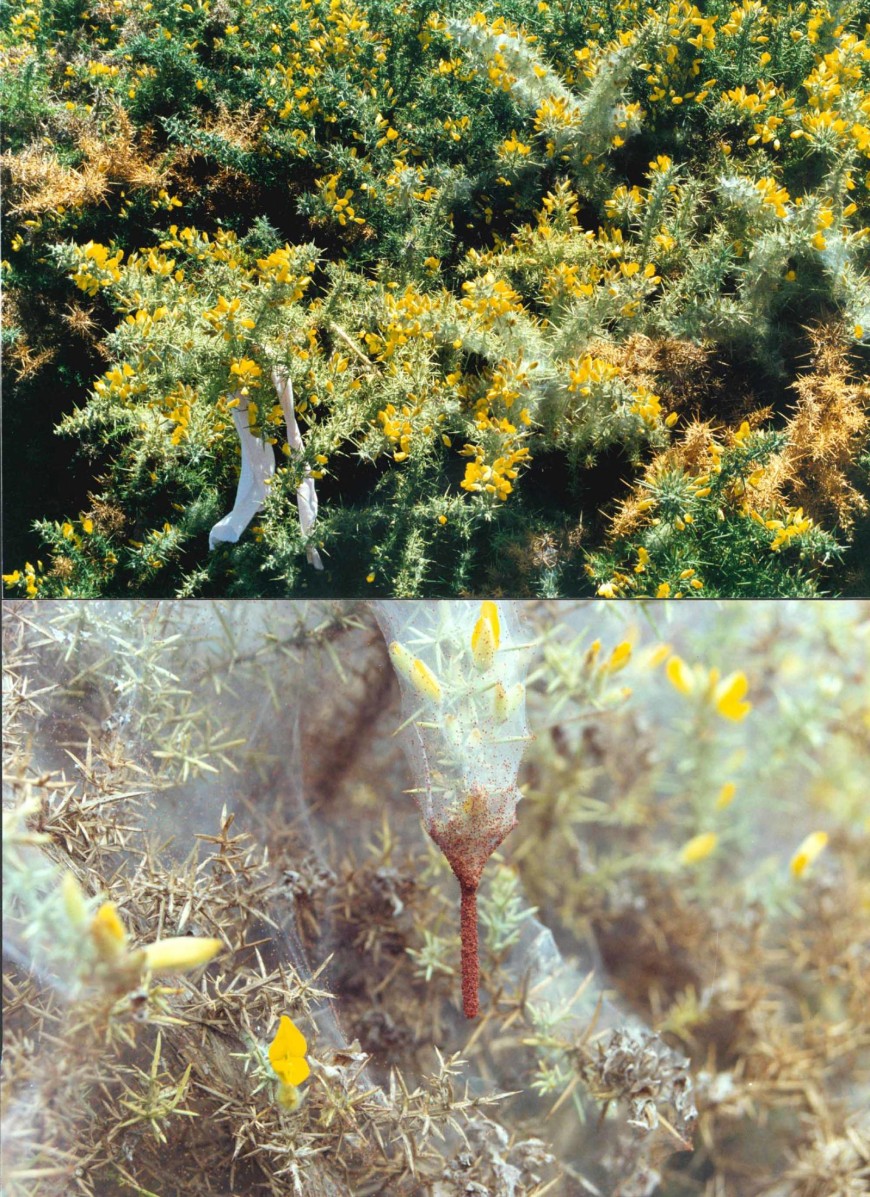
Image: gorse spider mite early stage damage (top), and late stage damage (bottom) where the mites have begun to 'drip' from the tip of the branch.
How can I get the most out of it?
Avoid using herbicide on bushes with gorse spider mites on them.
How do I select a release site?
Read Guidelines for selecting release sites for biocontrol agents.
How do I collect it for release at other sites?
Gorse spider mites are now well established throughout the country there should be no need to harvest and move them around.
How do I manage the release sites?
If you wish to remove gorse spider mites from hedges you can spray them with an insecticide such as "Kelthane" or "Peropal".
Key contact


